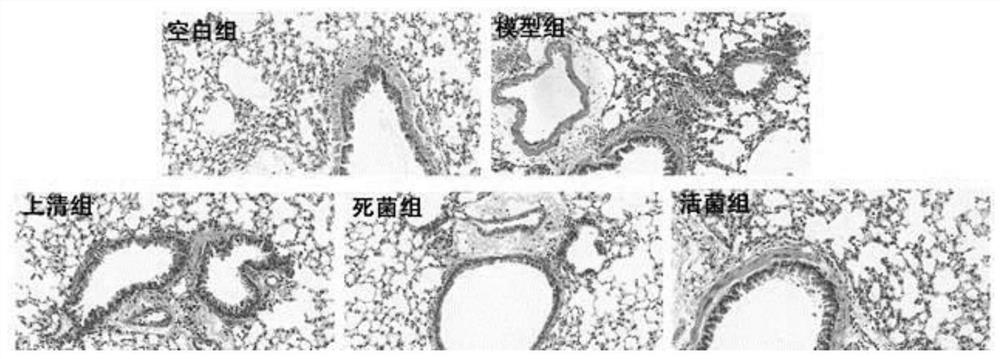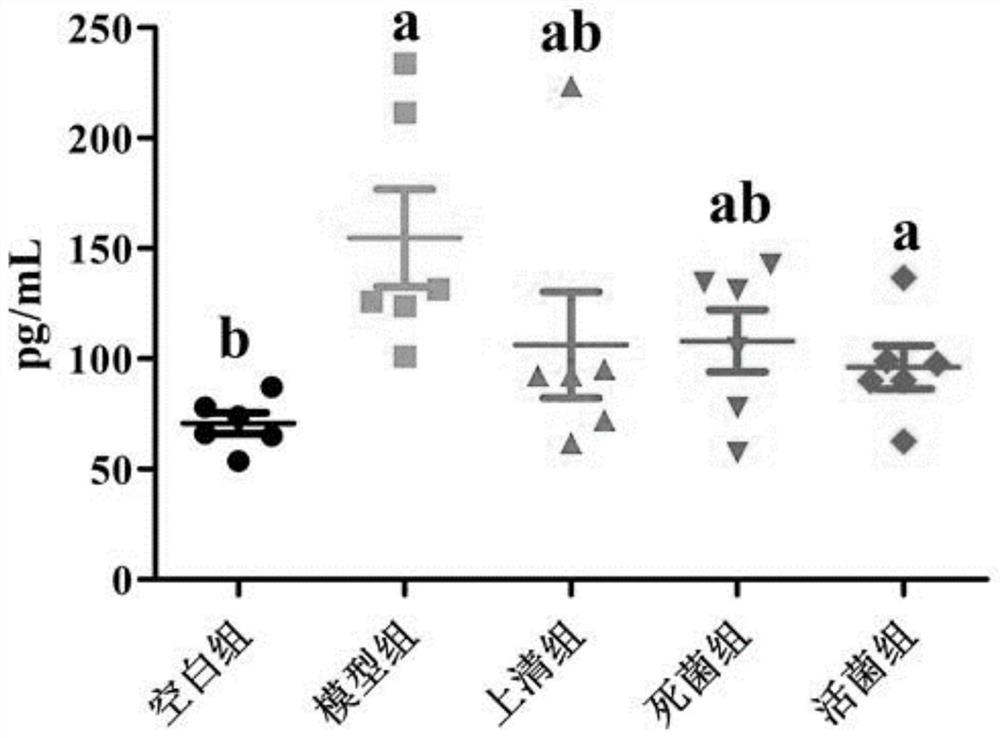Application of Faecalibacterium prausnitzii in relieving allergic asthma and rhinitis Th2 reaction
A technology for allergic asthma and Clostridium prazines, applied in the field of microorganisms, can solve the problems of slow effect, unclear effect relationship, poor effect, etc.
- Summary
- Abstract
- Description
- Claims
- Application Information
AI Technical Summary
Problems solved by technology
Method used
Image
Examples
Embodiment 1
[0052] Embodiment 1: the cultivation of Clostridium prausniformis
[0053] Specific steps are as follows:
[0054] After inserting Faecalibacterium prausnitzii A2-165 into YCFA solid medium (containing 0.05% cysteine) and culturing at 37°C for 48 hours, the colonies were observed and found to be convex, translucent, with complete edges, moist.
[0055] Insert Faecalibacterium prausnitzii A2-165 into YCFA liquid medium (containing 0.05% cysteine) and culture it anaerobically at 37°C for 18 h, then transfer to fresh YCFA liquid medium (containing 0.05% cysteine Cystine), cultivated under the same conditions for 18 hours, obtained the bacterial sludge by suction filtration in the anaerobic workstation, then washed and resuspended with 0.1M PBS (pH 7.2, containing 0.05% cysteine) to obtain the bacterial suspension, and used a sealed Store the bacterial suspension in a freeze-dried vial with a stopper and use it on the same day.
Embodiment 2
[0056] Example 2: Effects of Flostridium prausiticus on pulmonary pathology of allergic asthma and rhinitis mice
[0057] Specific steps are as follows:
[0058] 40 SPF grade female BALB / c mice (14-16g) were randomly divided into 5 groups, namely blank group, model group and experimental group, wherein the experimental group included supernatant group, dead bacteria group and live bacteria group, 8 in each group. The mice were fed with common feed in the Experimental Animal Center of Jiangnan University, with a constant temperature of 21-26°C, humidity of 40-70%, noise less than or equal to 60dB, and animal illumination of 15-20LX (all animal experiment procedures were managed by the animal welfare and ethics of Jiangnan University committee to review and approve).
[0059] The experiment lasted for four weeks: the mice were adaptively fed for 5 days, and from the 6th day, the mice in the model group and the experimental group (except the blank group) were anesthetized every...
Embodiment 3
[0063] Example 3: Effects of Clostridium praustrii on the number of eosinophils in the lungs of mice with allergic asthma and rhinitis
[0064] Specific steps are as follows:
[0065] 40 SPF grade female BALB / c mice (14-16g) were randomly divided into 5 groups, namely blank group, model group and experimental group, wherein the experimental group included supernatant group, dead bacteria group and live bacteria group, 8 in each group. The mice were fed with common feed in the Experimental Animal Center of Jiangnan University, with a constant temperature of 21-26°C, humidity of 40-70%, noise less than or equal to 60dB, and animal illumination of 15-20LX (all animal experiment procedures were managed by the animal welfare and ethics of Jiangnan University committee to review and approve).
[0066] The experiment lasted for four weeks: the mice were adaptively fed for 5 days, and from the 6th day, the mice in the model group and the experimental group (except the blank group) w...
PUM
 Login to View More
Login to View More Abstract
Description
Claims
Application Information
 Login to View More
Login to View More - R&D
- Intellectual Property
- Life Sciences
- Materials
- Tech Scout
- Unparalleled Data Quality
- Higher Quality Content
- 60% Fewer Hallucinations
Browse by: Latest US Patents, China's latest patents, Technical Efficacy Thesaurus, Application Domain, Technology Topic, Popular Technical Reports.
© 2025 PatSnap. All rights reserved.Legal|Privacy policy|Modern Slavery Act Transparency Statement|Sitemap|About US| Contact US: help@patsnap.com



